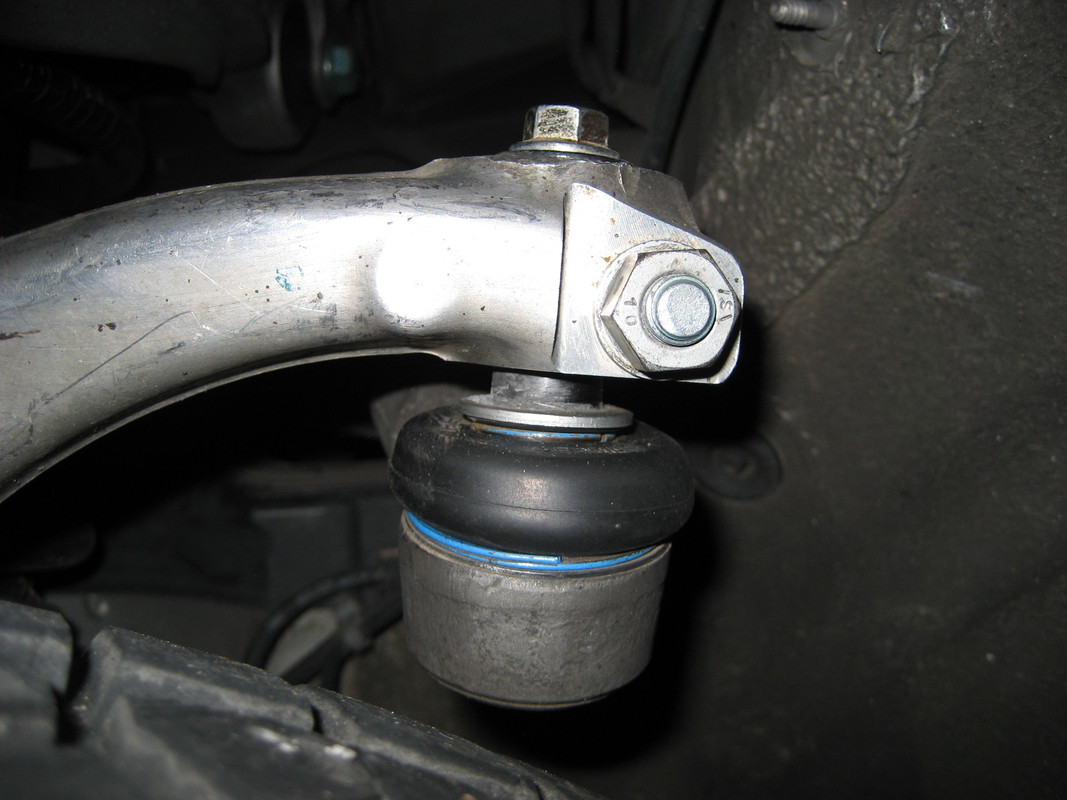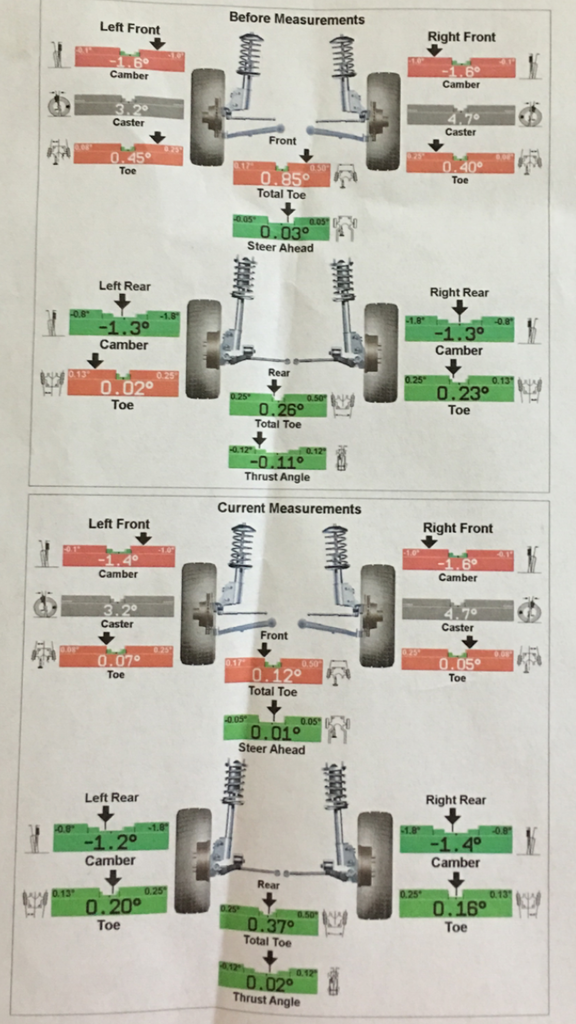I can’t guarantee that these specs will work for you. I can tell you what works for me from 12 years of ownership, lots of tires and many different set ups. I am currently at 25” fender to ground front and rear with standard non-adjustable front control arms. I had 50k miles of very even tire wear out of my last set of Conti DWS. I will get the same or more out of my current set.
The first step is to adjust your raised toe setting as far down as your outer tie rods will allow. Simply loosen the 16mm pinch bolt on the outer tie rod, back out the top 13mm adjustment bolt and push the tie rod shaft down as far as it will go. The pinch bolt goes through a groove in the shaft that limits the maximum amount of travel available. Tighten the pinch bolt up and snug the 13mm adjustment bolt. Done.

The raised toe adjustment helps to bring the angle of the tie rod arm back closer to level and reduces the amount of tire scrubbing that will occur as the suspension rides up and down with normal driving. I have found this adjustment to be critical in reducing inner edge wear. I suggest that you make this adjustment yourself before going to the alignment shop. If you ask them to perform this adjustment they will probably look at you as if you had two heads.
The next step is to make sure your camber is centered from side to side. Once you get much below the OEM sport height settings your camber will be out of spec. This really isn’t an issue as long as you get it reasonably centered. You can check this quite easily for yourself. All you need is a smooth flat surface and a framing square. Make sure the steering wheel is pointed straight ahead. Measure the difference between the top and bottom edge of your front wheels to the framing square and use an Angle Calculator to calculate the camber angle. If the camber is even side to side you are ready to go to the next step. If not you can center it yourself with the framing square and a few basic hand tools or you can have the alignment shop center it. Some great info here: Clicky click®
Now on to the front toe settings. I have found that as close to 0° front toe as possible with a slight touch of toe-in works best. At exactly 0° total toe I found that the steering had a slight tendency to wander. I recommend around 2.5’ to 4’ minutes (.04°-.07° degrees) of toe per side for a total toe of 5’ to 8’ minutes (.08°-.13° degrees). If you are lucky you can get the alignment shop to work with you on this. Unfortunately a lot of shops are reluctant to intentionally set anything outside of the published specifications.
But don’t despair. As long as the shop gets everything centered and you know your total toe setting you can fine tune it from there by yourself. Everything you need to know to adjust it yourself is contained in the later part of this DIY Clicky click ®
The rear settings are much easier. Camber and toe are both adjustable in the rear. Just ask the shop to get the camber centered and in spec and set the toe-in toward the minimum spec and you should be good to go.
And last but not least keep a close check on your tire pressures. DO NOT overinflate your tires. With the increased front camber the side walls need to be able to flex enough to keep from putting undue wear on the inner edge. I was able to confirm this by monitoring the tire temperatures across the face of the tires. I found that 34 psi was the best combination for decent handling and keeping the surface temperatures even across the face of the tread for my 235/45/18 tires.
Cheers!













 Reply With Quote
Reply With Quote







Bookmarks